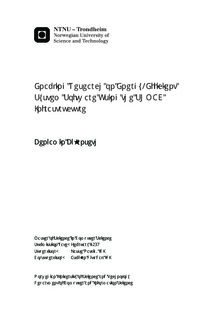| dc.description.abstract | The energy efficiency of computer systems is becoming an
increasingly important constraint in the design of
microprocessors. Energy consumption impacts battery life and
electricity bills, while power consumption is important when
considering device thermal constraints and cooling costs. These
factors have always been important for the embedded, hand-held
device and data centre markets. Recently, the breakdown of Dennard
scaling has hampered the ability to reduce transistor dimensions
while keeping processor power density constant. As high-end
processors drive further reduction of transistor dimensions, this
breakdown increases the importance of power consumption as a
constraint in their design.
Heterogeneous processor architectures have the potential of
increasing the energy efficiency of computer systems. To research
the design and system software control of such systems, the IME
faculty at NTNU launched the SHMAC research project. The project
ambition is to explore the heterogeneous multicore architecture
design space through customization of a generic architecture, which
is instantiated on an FPGA to speed up evaluation. However, the
current SHMAC infrastructure lacks a method for estimating the
energy consumption of a processor chip implementation of the design
it embodies. There is also no multi-core operating system available,
which hampers research on system software energy efficiency.
This dissertation enables research on the energy efficiency of
system software using the SHMAC infrastructure by filling these two
gaps. First, we extend the existing SHMAC-port of the operating
system Barrelfish to support running on multiple cores. Second, we
complement the SHMAC infrastructure with an energy efficiency
estimation framework. The framework includes a method for creating
energy consumption models for hardware components for which only an
HDL implementation is available. The efficacy of the method is
demonstrated through application on the existing SHMAC hardware
components. The average estimation error each cycle from all models
combined is 1.1 %. A hardware infrastructure which enhances the
SHMAC infrastructure to use these models and report online energy
consumption estimates is also included in the framework. The
infrastructure enables energy sampling periods of approximately 12
milliseconds, does not impact the FPGA execution speed, and has a
total FPGA resource overhead of approximately 18 % for the processor
core and 104 % for the router. | |

